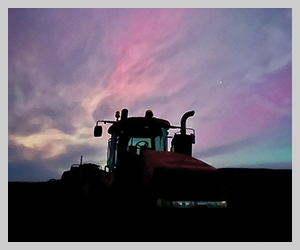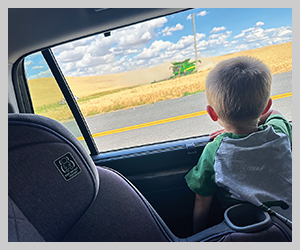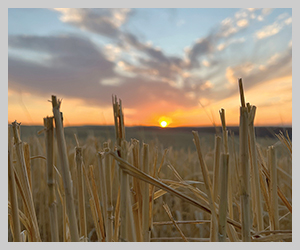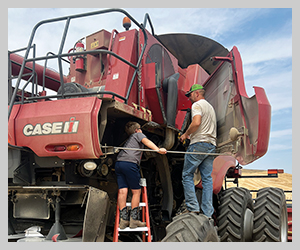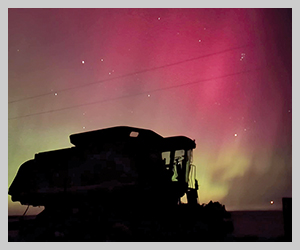Delving into the dams 'Sea change' in administration's standards for operation of system
2023January 2023
By Trista Crossley
Editor
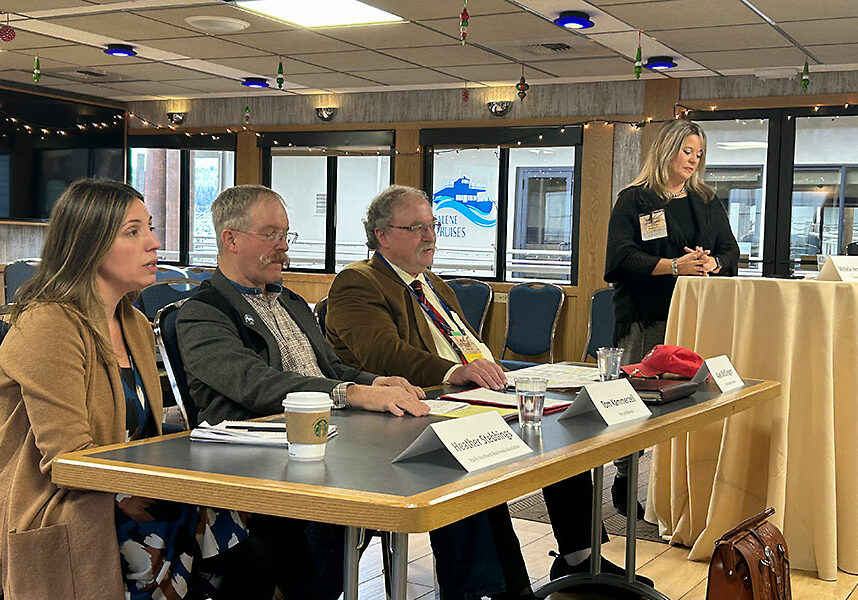
Growers at the 2022 Tri-State Grain Growers Convention had the opportunity to hear a panel of ag industry stakeholders share their perspectives on the fight to preserve the lower Snake River dams.
Sitting on the panel were Alex McGregor (AM), chair of the board of directors for The McGregor Company; Heather Stebbings (HS), executive director of the Pacific Northwest Waterways Association; and Tom Kammerzell (TK), a commissioner with the Port of Whitman. The panel was moderated by Michelle Hennings, executive director of the Washington Association of Wheat Growers.
Q. What got us here legislatively and in the courtrooms in regards to the dams?
HS. Our salmon issues began back in the 90s when we started to see the listing of salmon under the Endangered Species Act. With those listings, the U.S. Army Corps of Engineers now had to start operating the dams with respect to the fish. They had an overlay of their operations, saying “how do we make sure we are not jeopardizing the future existence of salmon and steelhead populations?” As part of those plans, the National Oceanic and Atmospheric Administration Fisheries issued biological opinions for how to do that. Each one of those plans has been litigated. In 2020, the Administration released a new plan, and it was litigated right away. This time, however, things shifted a little bit. The Administration came out last year and said, “We are really tired of being in the courtroom, and we want to take a pause in this litigation and see if we can negotiate a settlement with the plaintiffs on how to move forward.” They extended that stay through August 2023.
We have now entered the mediation phase of the discussion. As part of this, the Administration has laid out a number of commitments that they are going to adhere to throughout the process, and one of them is to give a hard look at dam breaching. We have not seen an administration do this in the past. This is a sea change, and they’ve gone from making sure we are not jeopardizing the existence of the species and switched to how can we get to harvestable and abundant populations. That’s a very different standard than we’ve been litigating about.
We’ve also have had a number of processes in the government relations realm. We had Congressman Simpson (Rep. Mike Simpson, R-Idaho) a few years ago come out with a plan to breach the dams and to try to look holistically at an agreement to do that. The price tag was $34 billion. We saw Sen. Murray (Sen. Patty Murray, D-Wash.) and Gov. Inslee (Washington Governor Jay Inslee) go through a significant process last year. Ultimately, the recommendation they came out with was that dam breaching was not viable at this time, but that they do want to look at ways to make investments today and over the next several years to get to a point where dam breaching might be a viable option should the region want to take that action. It’s really concerning to have some of our top leaders making big shifts in how they are approaching this issue.
AM. The Endangered Species Act was developed, as its title indicates, to make sure a species would no longer be endangered. Choosing to abandon that and go instead for “abundant” levels begs the question, compared to what? Some breaching advocates claim salmon and steelhead numbers have fallen 90% and that, before Meriwether Lewis and William Clark canoed down the rivers, 7.5 to 16 million fish traversed the streams every year. No one knows; there were no fish counting stations until the first dam, Bonneville, was built in the late thirties. And fish were aggressively harvested with salmon canneries galore and gillnetting before the dams existed. Fish counts at the newly built Bonneville were usually in the range of 600,000 per year. When the Pacific, where salmon spend most of their lives, is in a periodic cool cycle the numbers reach 1.4 million or more, as they have in two such cycles since 2000, with a third one underway. When it warms, we fall back toward where we started. The dams can’t fix damage done before the dams were here nor can they cool warm ocean waters.
TK. The other piece that’s concerning to me is decisions are being discussed without looking at scientific data. It’s being emotionally driven.
Q. Sound science has always been crucial to agriculture. Can we bring more science to bear to find a rational way to resolve this issue, and how can we make the case for healthy rivers and a healthy economy?
AM. Absolutely. Yes. There is sound science available. The biggest challenge we face is losses of salmon during the three years they are out in the ocean. Significant dollars were set aside in the infrastructure package of last year and in the so-called Inflation Reduction Act. There are 157 projects in the state of Washington, fisheries projects just east of the Cascades, that are waiting for funding. It’s a great opportunity to move forward and get real science to address these problems.
It was interesting that NOAA fisheries in their Seattle research office has done a lot of looking at salmon issues. The key one they came back with is returns on salmon through our dam system are very high, in the upper 90s at each one of them. There are other things we need to do to really make progress. Habitat offers hope. If we can have money go to improving the habitat we have, if we can have money go to culvert improvement and other things, and above all, money going to science, we are going to come up with something. I’ve believed for a long time we can have healthy rivers and a healthy economy.
TK. In Washington state, the maximum water temperature is 68 to 70 degrees for the salmon. There’s a problem when the water coming in from Idaho is between 74 and 76 degrees. You can’t cool it, and the dams are being blamed for the warm water. The Corps of Engineers has temperature data that they took between 1952 and 1957, and it shows the maximum water temperatures exceeded the Washington standards each and every year, with the maximum temperature being 79 degrees in 1956, and it stayed over that maximum for 80 consecutive days. The key? There were no (lower Snake River) dams. You’ve got to look at the science.
The other thing they keep talking about is using the rail system in lieu of the river system. The Washington Joint Transportation Committee did an analysis of rail traffic. By 2035, rail traffic coming from Spokane down to Pasco is predicted to be 130% of capacity.
We have a chokepoint along the north side of the Columbia River where there’s only one track, and there’s no room for expansion. The river and the rail are about 30 feet apart. The rail to the road is about 30 feet, and the road to the basalt bluffs, which are 400 feet tall, is 30 feet. So, you’d have to drill and blast 30 feet, but I’m pretty sure the Tribes and the historical groups aren’t going to be in favor of that.
HS. I agree, it would be very difficult to build the infrastructure needed to move all the barged cargo to rail and truck. Just on the Snake River, it would be about 40,000 additional rail cars. When we look at the trucking side of things, it would take 162,000 semitrucks to replace barging. Just this past year, the American Trucking Association released information that said we have a shortage of 80,000 truckers in the U.S., and that will go to a 160,000 shortage by 2030, so we wouldn’t even have the truckers to move a lot of that cargo.
Related to the fish, when we look at the Snake River, those are only four runs of fish that are endangered — four out of the 14 in the entire Columbia River Basin. You are not going to address all the issues for salmon by breaching the Snake River dams.
What we’ve been trying to advocate for is the fact that there are a lot of things we know, based on the science, that will work. If anybody has gone to Bonneville Dam or out to Astoria, you’ve seen the sea lions ready to eat the buffet of salmon that is coming back, so addressing predator issues, making the habitat improvements, that’s where we’ve been trying to focus our efforts. How do we work together to get that low hanging fruit in place?
Q. For years, hydropower has produced clean, renewable and affordable energy in the Northwest. We’ve heard that hydropower generated by the Snake River dams can easily be replaced with other types of green energy. Is that the case?
HS. The short answer is no. Hydropower is extremely flexible and adaptable. It’s the only green energy source that can essentially go from 0 to maximum output extremely quickly. If you want to flip on your light switch, hydropower can support that immediate need. Everybody comes home from work at 5 p.m. and wants to turn on the air conditioner (in the summer). There’s a high, high demand for that power. Hydropower is what provides that additional flexibility.
We all know the sun doesn’t always shine, and the wind isn’t always blowing. There’s no real way to store the green energy produced from those other energy sources yet. The technology just isn’t there. Hydropower provides 80% of the renewable energy in the Northwest. It provides 50% of the total energy we use. If we remove the dams, there’s no green way to replace that. We look at the new climate goals coming down the pipe, both state goals and federal goals, we are looking at the electrification of essentially everything. We have a big power surge we are going to need to address as we work to electrify our region.
AM. The energy loss if we don’t have these hydropower sources is enough to serve the energy needs of the homes in Seattle, Portland, Spokane and Boise all put together. In addition, when you think of alternative sources, one wind turbine takes 900 tons of steel, 2,500 tons of concrete and 45 tons of plastic. The Benton County wind farm is proposed to have 244 turbines. That’s 72,428 acres or 113 square miles.
TK. A good example of green energy is California. They are the green state for solar and wind, but if one’s memory goes back to just September when they had a little warm spell, 51% of their energy was coming from the Columbia-Snake River System. That’s when they were asking their electric vehicle owners to not plug them in. The quickest, most efficient, carbon-friendly battery is that water behind the dams.
HS. The technology (for alternate green power sources) will get there because there are tons of people working on doing that right now. But you are kind of trading one issue for another issue when you are building wind towers. There’s no way to recycle wind blades. Where’s the balance with that? We are looking to build solar panels. What about the copper and all the things needed for the batteries? For the build-out component, if you were to double the rate of building out our wind towers and our solar arrays and things like that, we still would not meet the climate goals of Washington state until 2070. The goal of the governor is 2045.
Q. We’ve been worried about the dams for many years, yet they are still here. Breaching seems so far-fetched and irrational, maybe it will fade away. Do we need to keep fighting this notion, and what can farmers do?
AM. I think it is folly to assume that storm clouds looming on the horizon will be ones you can just wait out, and there will be clear skies after that. I think we have an opportunity to be part of our own future, part of our own destiny, but we won’t get there being quiet. Yes, absolutely, there are more issues. And yes, absolutely, we will have to kick it up again, and we’ve been doing it for a long time. I first testified on this 25 years ago. It’s been a long fight for everybody, but I think we’ve held our own as agriculture, and I think we are helping people get a better understanding. Most people really aren’t that familiar with us anymore. They are three generations or more removed from the farm. Most people are willing to listen. We just have to get out and reach them. We can’t just assume this will go away, or others will do their best to ram through ideas harmful to agriculture, jobs and the economy. When we pull together, we win the day. Takes a while sometimes, but we hold our own. We should accept nothing less.
TK. Two percent of the population is feeding the other 98%. We’ve got to remember that. I just looked at my check for some wheat we just sold. Thirteen percent was going to transportation and fuel costs. If the dams were to go away, it would not be a far stretch to think that could double if you only have the rail system. If you remember back a few years on the Bakken crude, railcars that were $350 went to $3,500 because they didn’t want ag products on the rail. We have the highest quality wheat in the world. We need to feed the world if possible, and we need those transportation costs to stay down. The only way to do that is to keep the dams, the river system, the river freeway.
HS. I don’t believe this issue is going anywhere. There’ve been quiet times, there’ve been loud times, but I’d say those quiet times are getting smaller and smaller. There is a solid, steady drip coming from environment groups and the Tribes about the dams. They’ve had the long game in mind. We need to be collectively thinking about the long game, and we need to continue this steady drip of information to our legislators.
We need to think about new and different ways to tell our story. Things have become so polarized on the right and on the left, and we have less and less people in the middle ground who are willing to work together. Unfortunately, the west side wants to make decisions for the east side. We have to try to resonate with them in some way, whether it’s how they get their food and local food sources, or whether it’s the greenhouse gas piece. We’ve also been trying to find different and new ways to partner with the Tribes, to help move their salmon restoration and hatchery investments forward. Thinking about the salmon issues in new and different ways takes a lot more brain power, creativity and collaboration than we’ve had to do in the past. It is not business as usual any longer, and we need to be driving the solutions going forward.



